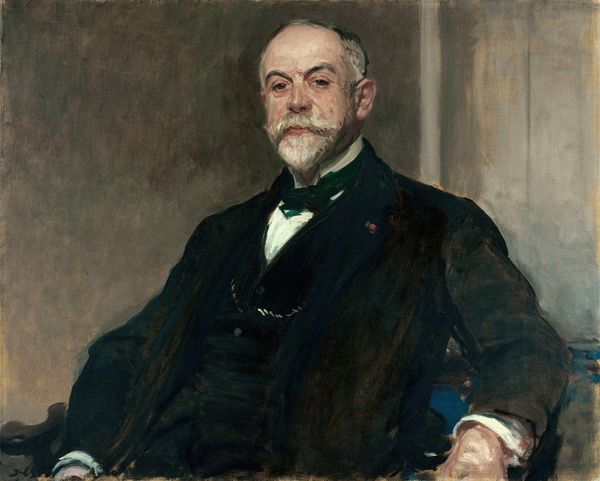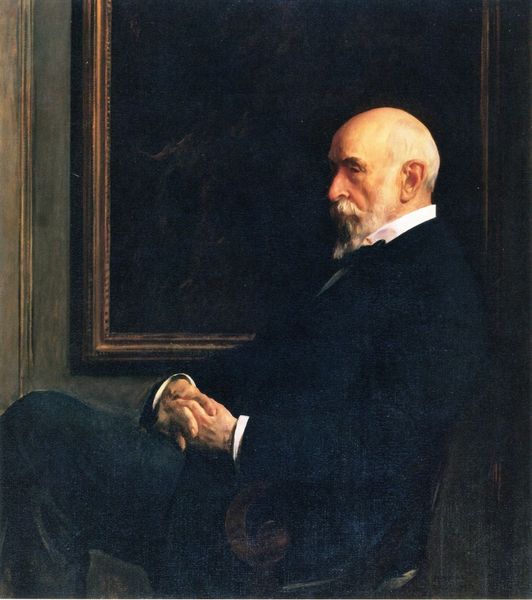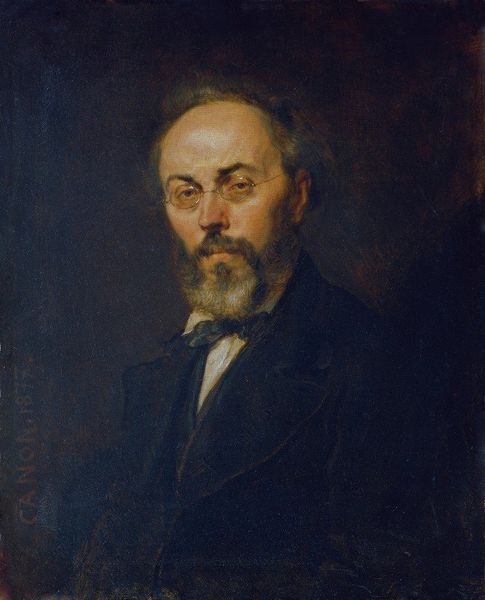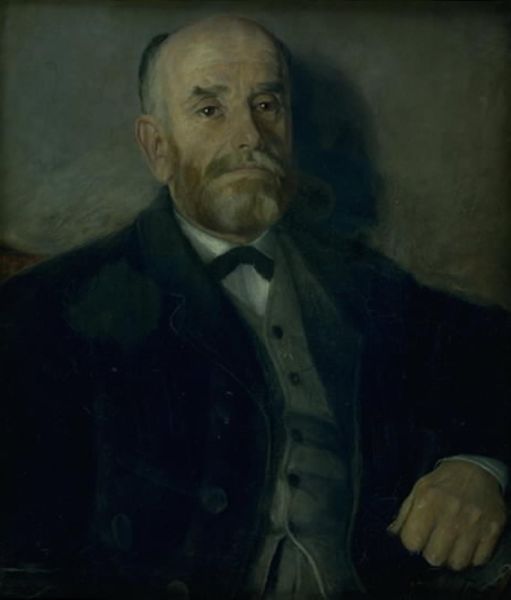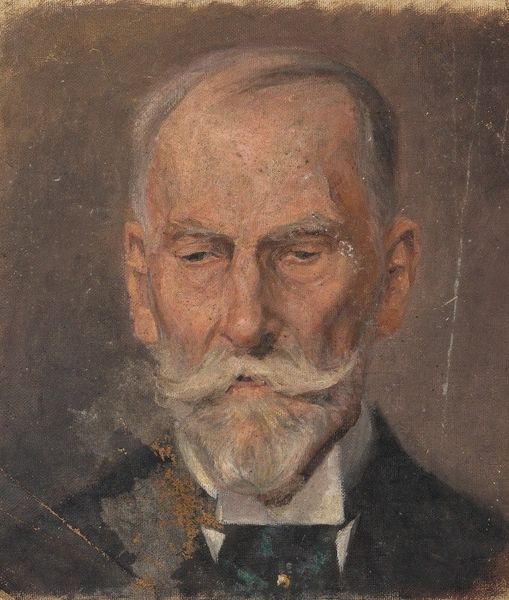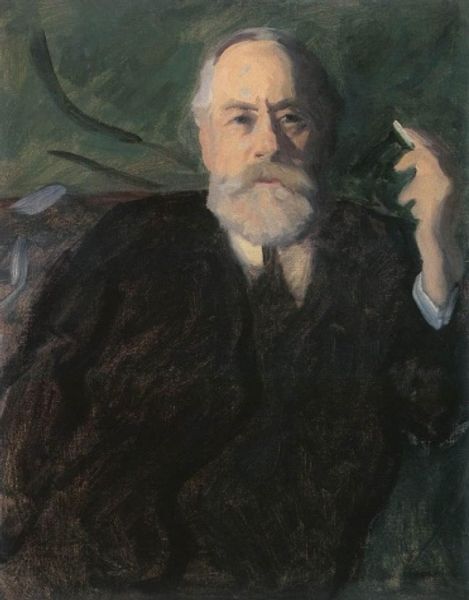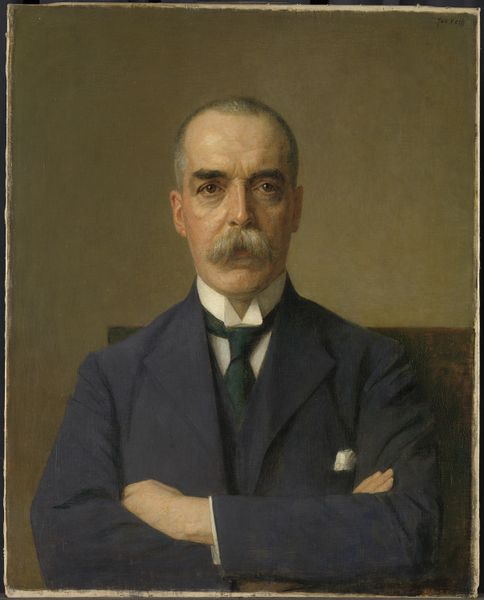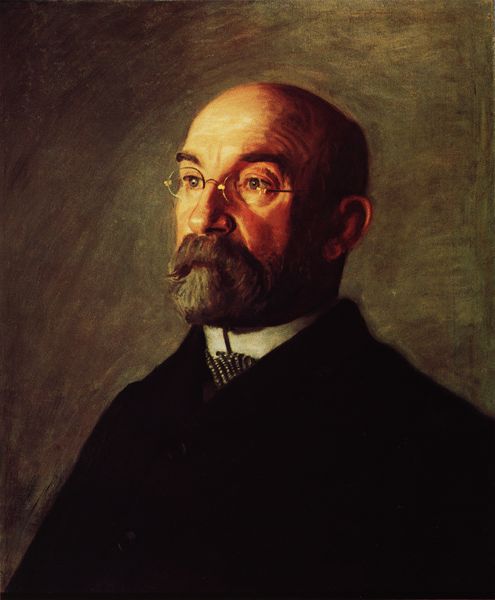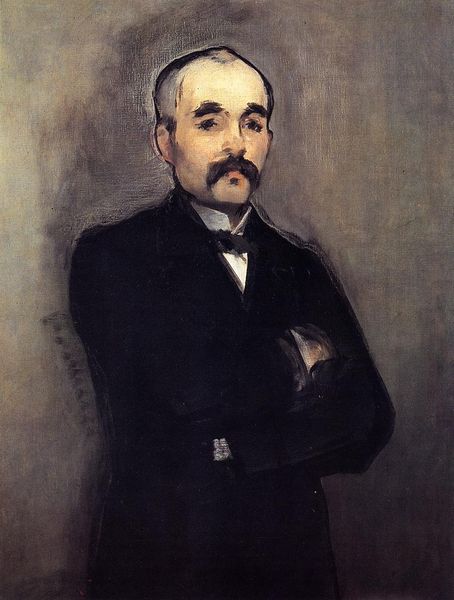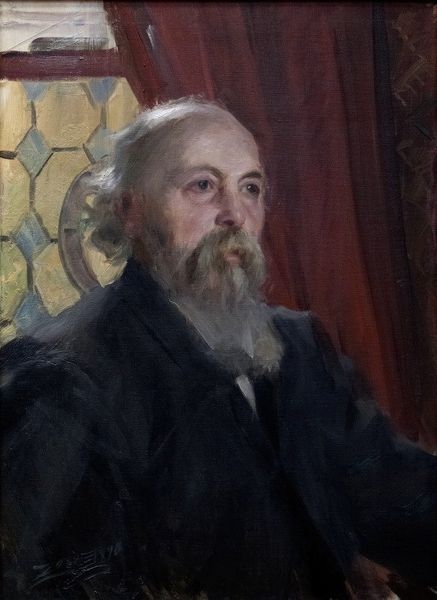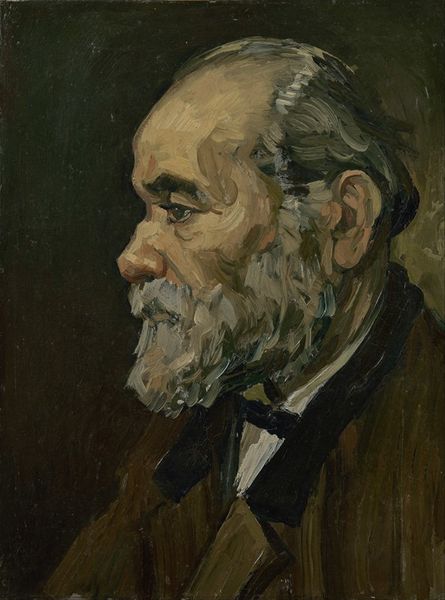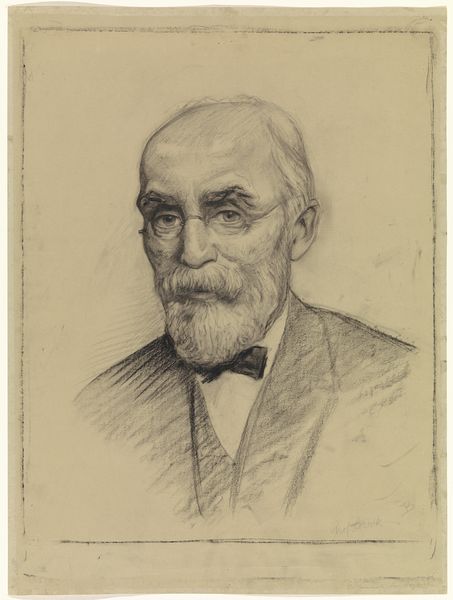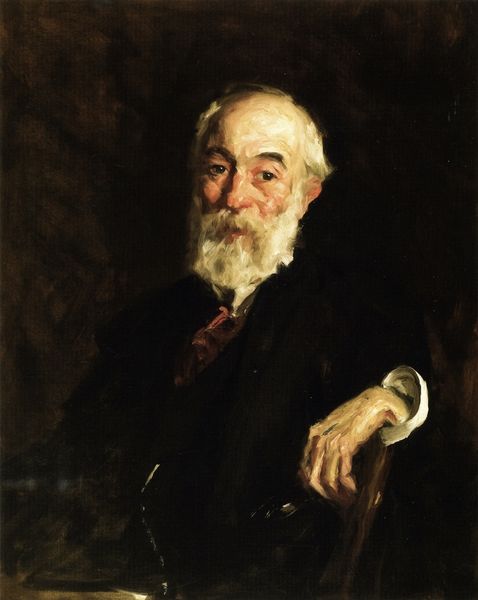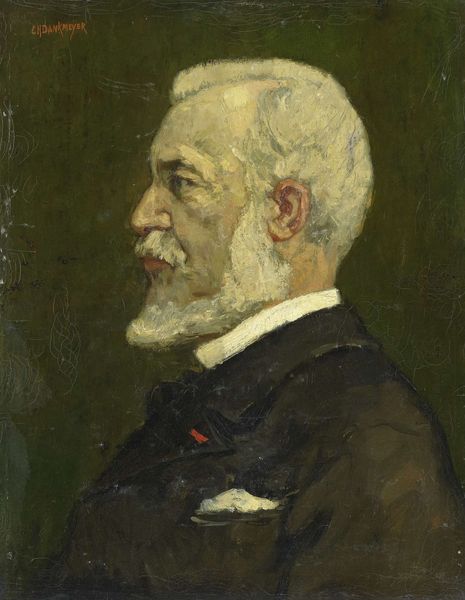
Copyright: Public domain
Editor: We are looking at “The old Stubb,” painted in 1898 by Polychronis Lembesis. It’s an oil portrait, and the sitter seems quite formal and composed. I’m curious – what stories do you think it tells about the era it was created in? Curator: What immediately strikes me is the subtle performance of masculinity in this portrait. Consider the historical context. This painting emerged at a time when ideas about national identity and civic virtue were gaining momentum in Greece. Does the subject’s stern gaze, formal attire, and cane speak to those burgeoning ideals? Editor: That's a great point! I hadn’t considered the symbolic weight of the cane and the subject's intense gaze. Could the darkness of his clothing also play into it? Curator: Absolutely. Black, although understated, can signify authority and respectability. In the late 19th century, such visual cues would have been crucial in constructing a specific public image. Who do you imagine this man to be? Editor: I see someone possibly in a position of power within his community – a respected elder, perhaps? Is it typical for portraits from this period to carry such overt messages about status? Curator: Often, yes. Portraiture in the late 19th century wasn’t just about capturing likeness; it was a powerful tool for projecting societal roles and personal aspirations. Do you see any elements that might challenge or complicate that projection? Editor: Perhaps the muted colors or the subtle brushstrokes, which hint at the influence of impressionism, softens the rigid formality we’ve been discussing. It makes me feel like there is also individual character that transcends the expectations of the era. Curator: Precisely. Lembesis offers a fascinating balance, doesn’t he? A play between established conventions and emerging artistic trends. The social context informs the artist's choices, even as they break from strict academic tradition. Editor: I am starting to appreciate how much portraits communicate about society beyond the individual depicted. It encourages a broader reading. Thanks so much! Curator: My pleasure! Remembering that art always participates in a dialogue with its historical present, adds depth to any interpretation.
Comments
No comments
Be the first to comment and join the conversation on the ultimate creative platform.
